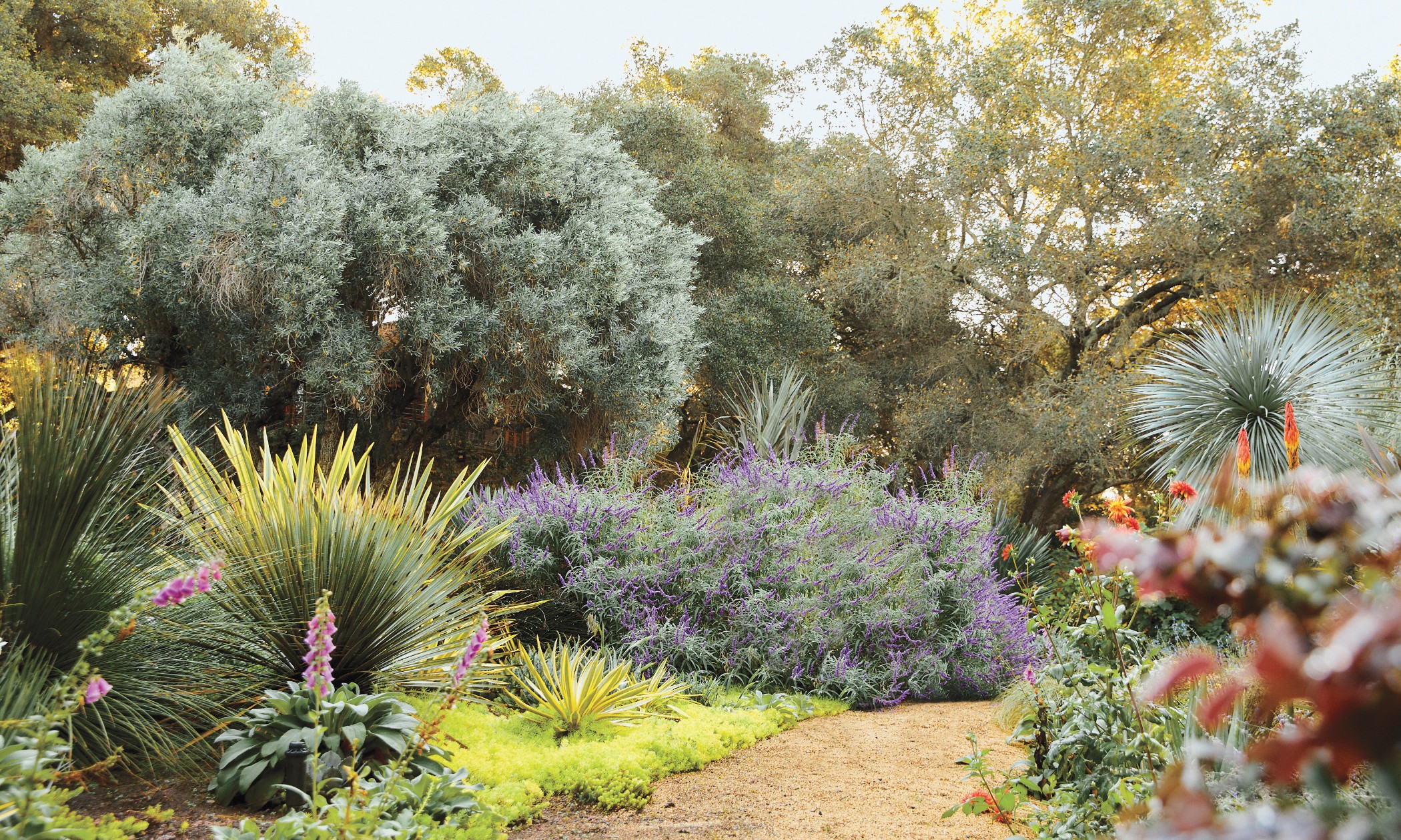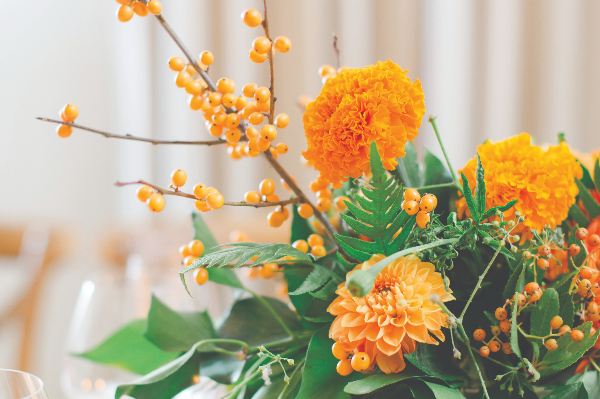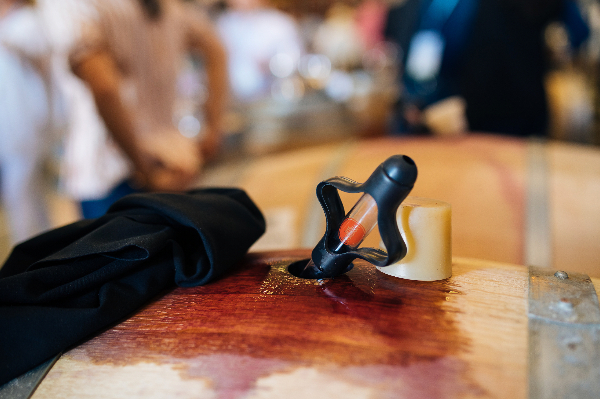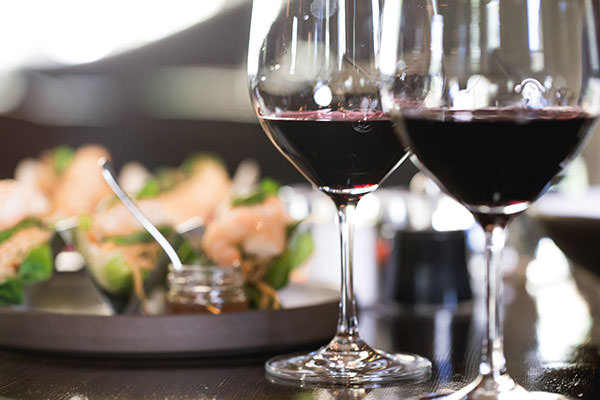Today the Napa Valley is synonymous with fine wine, but the valley’s earliest inhabitants, the Wappo tribe, called the area talahalusi, which means “beautiful land.” From the misty hills of Carneros to the rugged forests of Calistoga to the expansive Mayacamas and Vaca mountain ranges, the beauty of the Napa Valley is unparalleled. But the best way to discover Napa Valley is by leaving the main highway and heading up a winding mountain road or down a gravel path. Here are four hidden natural treasures just waiting to be discovered.
Chandon
When it debuted in 1977, the original ROMA architects' design for Chandon was pioneering for its time, both in its organic modernity and in its respect for the natural surroundings. Chandon lore says only a couple of trees were removed to create the winemaking complex.
As the Yountville winery celebrates its 50th anniversary, it’s showcasing a new side with a renovation that took three years to complete. “There’s an element of surprise as you come up the drive as the property reveals itself,” says Estate Director Stéphane de Meurville. A row of olive trees gives way to a woodland scene that unfolds around a small brook. Walking slowly over the bridge to the entrance allows time to appreciate the ducks playing in the stream rimmed by old oaks, moss-covered boulders and calla lilies.
The new design, by architect Linda Taalman, retains the original barrel arch roofline while making the winery feel more open, inviting and earthy. Generous windows flood the space with natural light that plays off the terracotta, stone and wood surfaces and furniture that enhances connections with the natural world.
Kick off your shoes and enjoy the carpet of green grass on the Yountville Terrace. Walk pathways among swaying golden pampas grass and pink-tinted grasses to Wright’s Landing and Oak Grove, with their views of vineyards and distant mountains. Or enjoy the sound of a waterfall and undulating water off the private member terrace.
Jarvis
It’s easy to miss the sign saying “Welcome to the earth” as you step through the arched metal doors that have just opened on cue. Walking into the cave at Jarvis, there’s a sense of anticipation and wonderment, almost like an explorer journeying into the core of the earth.
Founders William and Leticia Jarvis didn’t want to disturb the tranquil Atlas Peak landscape, so they built their entire winery underground, a first in the world of wine. The next thing you notice is the color: from the ceiling to the floor, the inside of this mountain is pink. It’s a soft blush hue that could be called “millennial pink” if it weren’t about five million years old. There’s a feeling of safety and calm comfort as you walk deeper into the shadowy caves with high parabolic arches that feel like a cathedral.
In the background, there’s a soothing sound of water. During construction, machines such as those used to dig the Chunnel were boring through the mountain, and they hit a natural spring. “The engineer said we can plug it but it will come back somewhere else,” says Will Jarvis, winery president. The solution: They added water channels to provide additional humidity inside the cave.
As you slip deeper into the caves, the sound of water becomes more intense, reaching a crescendo at the waterfall, just outside the tasting salon. Skip over a little stream, and you enter the tasting salon where you’re rewarded with luxurious, long-aged estate wines borne entirely from this mountain.
Sequoia Grove Winery
When Jim Allen founded his Rutherford winery in 1978, a name came to him naturally. He called it Sequoia Grove, after the majestic trees that have been rooted at the property since 1910. “This speaks to our connection to nature and recognizing the millions of years this species of trees have survived,” says Rick Bonitati, president of the winery. “Our family thinks in generations.”
Commonly known as sequoia trees or giant redwoods, the botanical name is Sequoia sempervirens, which means always green. The trees are one of the oldest plant species on Earth and individual trees can live 1,000 years or more.
While the property boasts several of these historic trees, the most impressive is a circle of six sequoia trees just outside the tasting room. The tree formation known as a “fairy ring” happens when a central mother tree sends out shoots that grow into baby sequoias. At some point, the mother tree in this ring died, but her offspring are going strong.
Whether tasting inside or on the terrace, take time to stand inside the circle of trees. Rest your hand on the dark, shaggy bark and look up.
Under the canopy, expect to feel a sense of calm. Maybe it’s the color green, or perhaps it’s the plant chemical phytoncides that the trees release. A Japanese researcher found that phytoncides can slow the heart rate, reduce blood pressure and improve sleep. Standing among these trees feels like being surrounded by guardians.
Rudd Estate
At most places, golden hour doesn’t start until 4 or 5 p.m. But even at mid-morning, the gardens and rows of vines at Rudd Estate are bathed in a soft golden light. “I see similarities with Provence here,” says Managing Director Oscar Henquet, a native of the French region that attracted painters like Matisse and Cezanne. “The light is so stunning.”
Even without the golden light, there’s a painterly aspect to the estate off Silverado Trail and Oakville Cross Road. The winery feels like a sprawling cottage and the surrounding woodland scene unfolds in striking natural vignettes: a riot of red ivy tumbling over a gate; a weathered garden bench surrounded by greenery; wizened oaks that seem to be reaching for one another.
The quiet showstopper at the heart of the biodynamic estate is a three-acre oasis with a curving lake rimmed by boulders, mature trees and gardens designed by Susan Rudd, who co-founded the winery with her late husband, Leslie Rudd. The olive trees, strawberry trees, flowering maples and manzanitas absorb CO2 while attracting native bees and other wildlife. “We’re trying to grow the diversity on the property,” Henquet says, since that’s more biologically healthy than mile after mile of Vitis vinifera vineyards. “It’s listening to nature.” No matter if you’re tasting in the greenhouse, the boathouse or the open-air barn, designed by architect Howard Backen, visitors feel immersed in nature.




